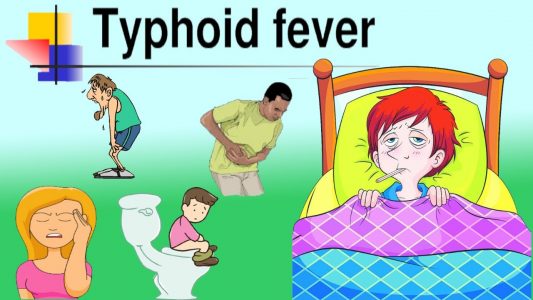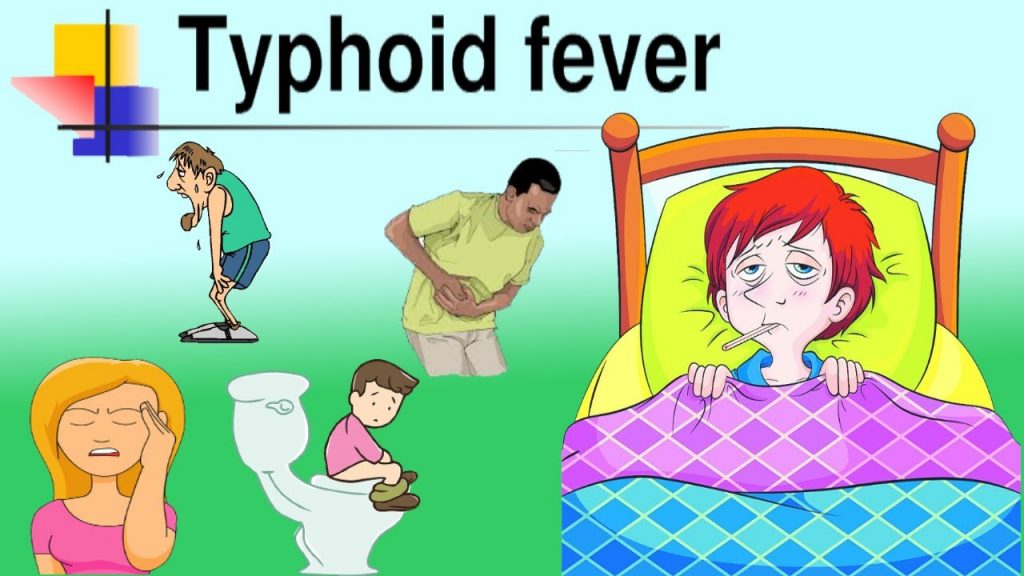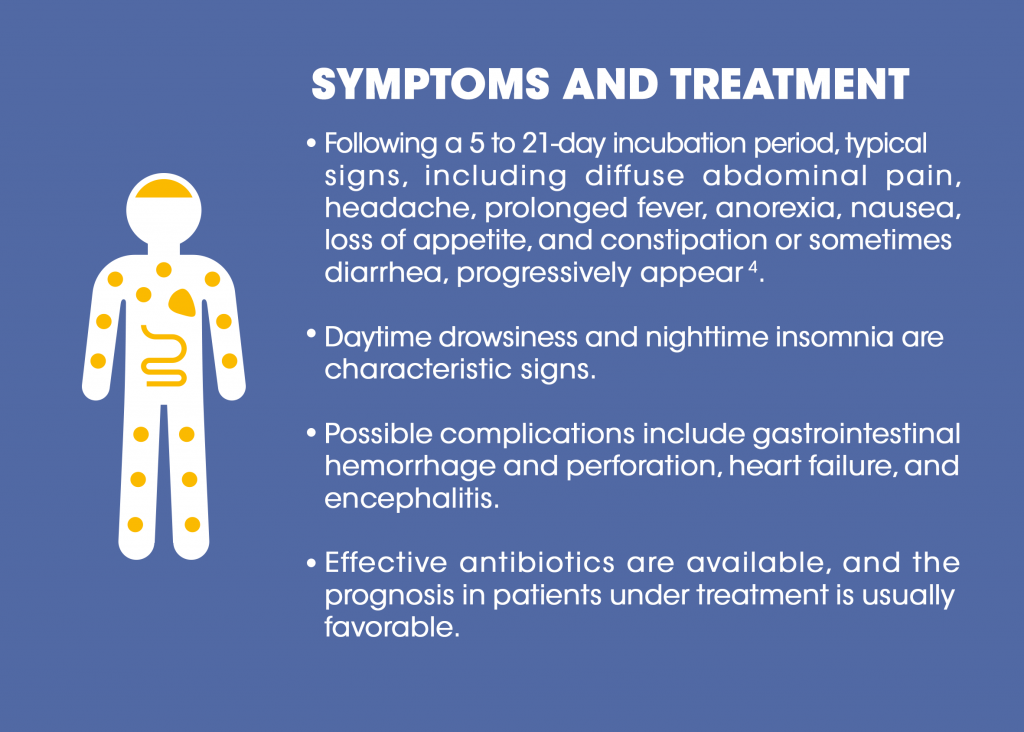
Typhoid Fever: Causes, Symptoms, Treatment
Typhoid fever or simply Typhoid is a bacterial disease that is caused by a Salmonella Typhi. It is commonly spread through the consumption of contaminated food or water. The symptoms of the disease are those of high fever, stomach pain, Diarhoea or Constipation.
Some other persons may have headache. Treatment is very important with the help of antibiotics and fluids. In areas where they are available, Vaccines can help prevent the disease.
What is Typhoid fever?
Typhoid fever or as we simply called it “typhoid” is a disease originating in the gut and affecting the whole body with 3 main symptoms abdominal discomfort, headache and fever.

Causes of Typhoid fever
It is caused by the presence of large number of Salmonella typhi and salmonella Paratyphi type A, B, and C. These are bacteria. Man happens to be the only source or reservoir of the infecting organisms, mainly from contaminated food or water.
Transmission of Typhoid fever
The disease can be spread through:
- Through the mouth from contaminated food or beverages handled by healthy carriers of the disease who shed the organisms from their faeces and rarely, urine.
- Hand-to-mouth: After using a contaminated item, especially toilet, and neglecting hand washing.
- Through the mouth from sewage contaminated food or water. This is common in areas with poor hygiene, lack of adequate supply of clean water and sewage disposal system.
Risk Factors for Typhoid fever
So, who is at risk of having enteric fever?
- Those who patronize street food vendors with poor sanitary practices.
- Individuals on anti-ulcer medication e.g Antacids (gestid, gascol), H2-receptor antagonists (Ranitidine, famotidine), proton pump inhibitors (Omeprazole and Co)
- Individuals who have had their stomach removed
- Individuals who have an inability to produce stomach acid.
- Poor socio-economic class due to association with limited resources to maintain good hygiene.
Typhoid fever Illness
Can range from a mild episode of diarrhea with low grade fever to a full blown generalized illness affect all the body system.
Symptoms of Typhoid fever
The signs and symptoms of typhoid fever includes:
- Abdominal pain
- Abdominal discomfort
- Fever
- Weakness and fatigue
- Headache
- Generalized body weakness
- Joint pain
- In longstanding cases: greenish discoloration of eyes, mouth
- Muscle aches
- Loss of appetite and weight loss
- Rash

Treatment of Typhoid fever
Typhoid fever, especially in children can be life-threatening if it is not treated at the early stages. If you suspect that you have any of the signs and symptoms of typhoid fever as listed above, You should see a doctor. With appropriate treatment, the fever commonly resolves in about two to four weeks.
Your doctor would examine you, and may also request other investigations to confirm that indeed, you have the illness. Example of this investigations are:
- Microbial Culture of the organism: This refers to detecting the organism causing the illness (salmonella typhi) in your blood stream, bone marrow or intestinal content (e.g: Vomitus or aspirate).
- Serologic tests: This tests are done to detect the presence of a protein that your blood has produced to fight against certain components of the organism (antibodies). The most popular type is widal test, and it has no value at all in proving whether you have the disease.
After your doctor confirms that you might have Typhoid fever, he/she would provide you with medications, mostly antibiotics that are effective in killing the bacteria that causes the illness. Please, do ensure that you take your medications exactly as prescribed by your doctor for best results.
Complications of Typhoid Fever
If not detected and treated on time, typhoid fever can lead to complications, such as:
- Intestinal bleeding
- Holes in the intestines
- Peritonitis
- Death: commonly due to the intestinal bleeding, perforation and peritonitis.
Other complication are Urinary tract infections, meningitis, pneumonia, etc
Prevention of Typhoid fever
As we always say, Prevention is always better and cheaper than cure. You can prevent infections or outbreak of Typhoid fever by:
- Improved sanitation, especially, places where meals are prepared, especially among food vendors. Avoid buying or eating food from unhygenic places.
- Use of clean water for cooking and drinking. For those who can afford it, bottled or purified water may be better.
- Vegetables and fruits should be properly washed before consumption.
- Avoid ice or ice creams from questionable sources. Same applies to cold food.
- Routine practice of hand washing after using the toilet, especially public toilets.
- Proper disposal of sewage to avoid it contaminating food or drinking water.
- Avoid excessive consumption of alcohol, smoking, abuse of antibiotics and other drugs. These habits weakens the immune system to fight against diseases.
- Vaccination in areas where they are available can help prevent the disease.
Similar Conditions to Typhoid fever
This means: “what else could it be if not typhoid”, and other conditions that could have similar symptoms with typhoid fever could be:
- Malaria
- Appendicitis and its complications
- Abdominal abscess,
- Dengue fever,
- Amoebic dysentery,
- Food poisoning.
I hope you understood something from this?
Feel free to ask any questions you may have below.



Leave a reply